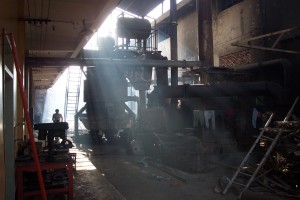
This Wall Street Journal article discusses how China is losing foreign direct investment in its low cost manufacturing sector, which includes the production of goods such as shirts and basic electronic components. The production of these goods is now shifting to cheaper production regions such as those of Southeast Asia, in part due to Beijing’s desire to move towards high-value production in order to boost incomes. The author notes how total FDI in China has fallen 3.7% since the beginning of 2012 to a figure of $111.72 billion. However, economists have stated that this drop can also be attributed to the sluggish overall growth in China and the European debt crisis of 2012. Rising costs of production and rising wages in China have also made the country a less appealing source of FDI.
One example of the shift in FDI towards Southeast Asia is the recent decision made by Italian leather producer, Coronet SpA. The company will construct a factory in Vietnam rather than expanding its current one in China’s province of Guangdong due to lower operating costs. Despite the trend in FDI moving away from China, the country remains among the top three locations for FDI for 58% of the 300 members surveyed by the American Chamber of Commerce.
Look at the foreign exchange graph at the top of the home page, and the post on the RMB by granruth. Surely this matters, as it would accentuate any rise in wages in yuan (local currency) terms, offset of course by productivity gains — of which there may be none left in the sewing of garments. It’s an empirical question of whether one factor dominates others; calculate the percentage appreciation of the yuan relative to the dollar, and look for similar data on wages!
It’s intersting to see that textile manufacturing is already leaving China. I’m from NC, so I witnessed firsthand the departure of the industry from the state (which used to have low costs of production) to Mexico and Central America, and then eventually to China. It’s amazing how quickly textile manufactruing travels around the world, so to speak.
With the increasing cost of energy and the rising income levels in emerging markets, I believe a significant amount of manufacturing jobs will return the US. Natural gas prices domestically are the lowest in the world, which provides cheap electricity and other forms of energy to industrial plants. While textiles may not be the best example of outsourced jobs returning to the US, other companies have done so. These companies include Caterpillar, Master Lock, Whirlpool, and many more.
Source: http://www.globalpost.com/dispatch/news/regions/americas/united-states/120504/american-manufacturing-jobs-returning-outsourcing-reshoring